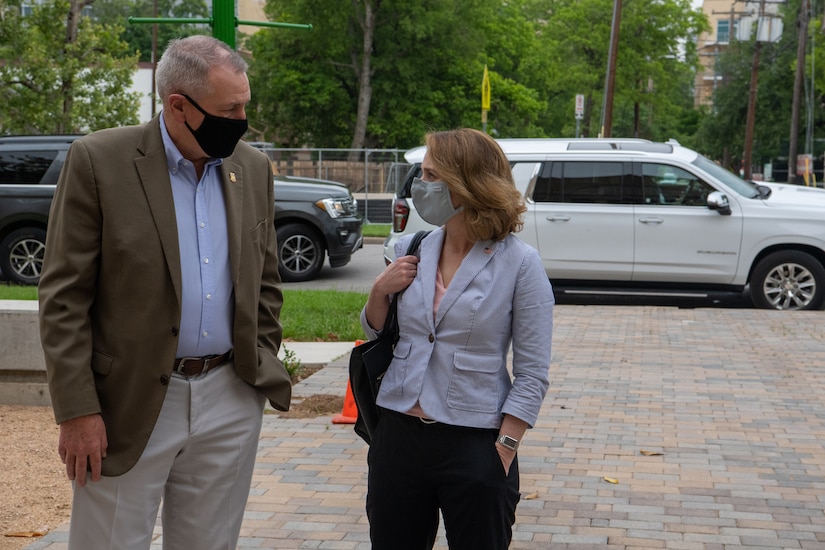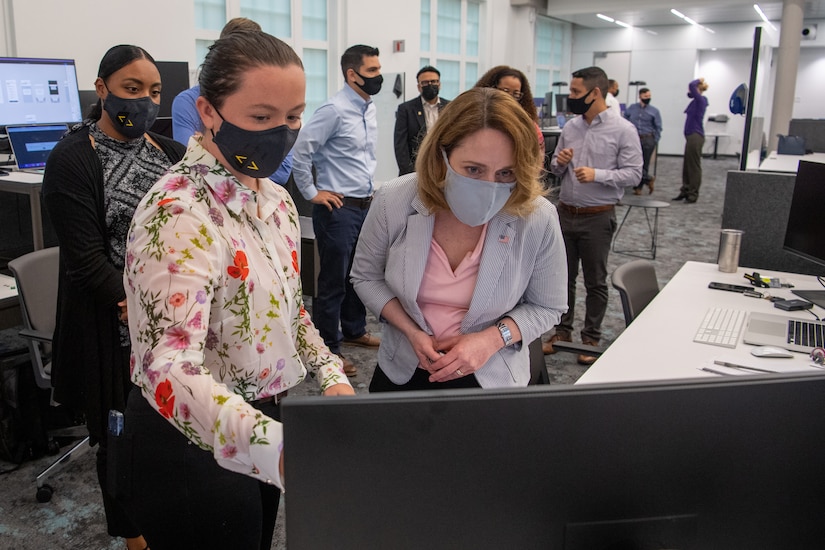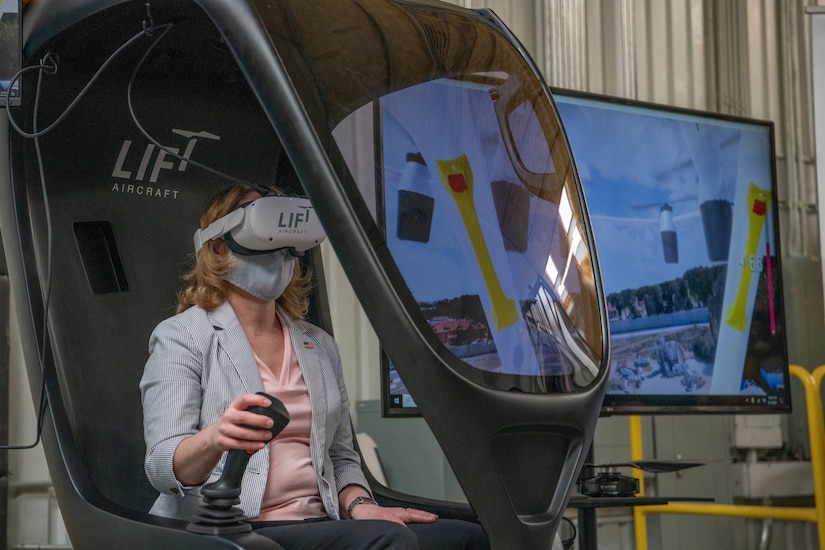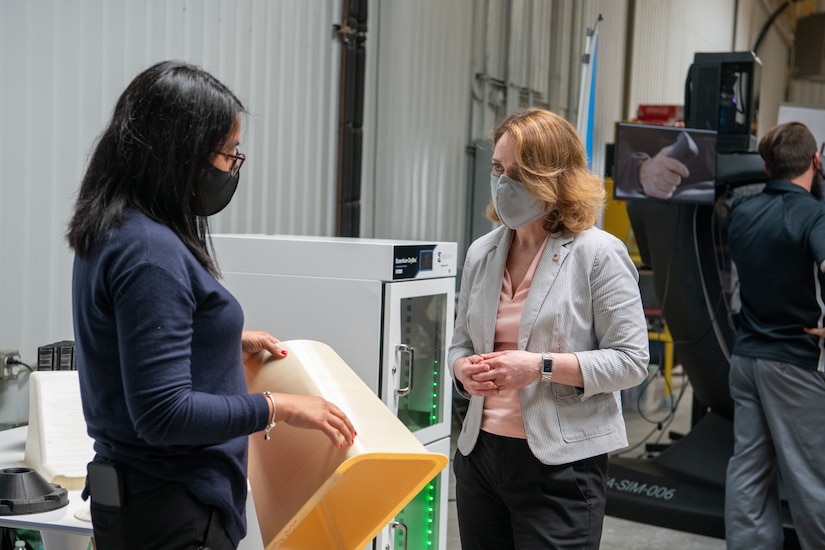May 13, 2021 | , DOD News
The secretary of defense has been clear that modernizing the military is a key component of how the Defense Department defends the nation, Deputy Defense Secretary Kathleen H. Hicks said this week after spending a day at Army Futures Command in Austin, Texas.

Hicks' trip focused on the DOD's innovation and modernization efforts and use of best practices to put new technology in the hands of the warfighter.
In modernizing the total force, Hicks' job is to help Secretary of Defense Lloyd J. Austin III move strategy to application, she said, explaining that line runs directly through concept development, capabilities, force design and eventually resourcing. "That's what Army Futures Command is all about for the Army, so it helps me significantly to be able to come down here and see what part the Army is trying to play in helping move to execution through those same key lines," she said.
In addition to meetings, briefings and visits with Army Gen. John. M. Murray, AFC commanding general, Hicks saw the collaboration between the Army and academia at the AFC Software Factory and the AFC Applications Lab.
Public-private partnerships are critical to modernizing the force, she emphasized. "[They're] even more critical today because so much of the investment in ecosystems around innovation is happening outside of the government sector, so it increases the need for DOD to make sure it's [the Defense Department] part of that broader innovation ecosystem," Hicks said.
DOD has been taking ideas and concepts that are critical for military needs and helping transition them to solutions for about a decade. "But I think we're just starting to really see the seeds germinate around how we do it," she added.

The deputy secretary said she witnessed excitement and passion as she watched Austin Community College software lab students work and learn collaboratively with soldiers to find solutions to software issues. Software developers must be agile and able to jump from problem to problem, she added.
It's significant to have a resource such as academia pulled into a traditional military hierarchy if the collaboration yields software solutions, Hicks said.
"I think, at the corporate enterprise level, what we're trying to focus on is learning more about the great ideas that are out there — of which there are many — and [AFC] is one of them," she said.
It's important, she added, to bring ability and transparency to modernization and innovation efforts and create more of an ecosystem from the enterprise level. That makes it easier for policy-making customers to understand what's available and quickly leverage it.

The deputy secretary said DOD wants to pull up those good ideas and see what's working at the corporate enterprise level. From there, she said DOD can think about whether major policy and authority changes are needed and whether there are incentives.
"That's the piece where I think I can provide the most sum on the scale," she said. "How do you change the incentives around everything from promotions to how budgets are determined and those sort of major levers that help you shift culture over time? In a way, that's supportive of innovation, and we're just at the beginning of that journey."
Murray said a strength of AFC's Applications Lab is that it starts with the problems that need to be solved for the Army. "We struggled for a long time trying to figure out the sweet spot for [AFC's Applications Lab], and I think we have stumbled upon something," he said.

Being able to describe that problem so the average person can understand it — without acronyms and very simply — also fosters innovative thinking.
"We end up with some decent products, but I'm really interested in expanding the way we think about problems, and I think just the conversations we have with people who think differently about how to solve problems is probably the biggest benefit we’re going to get," the general said.
Ultimately, AFC is trying to solve problems for the soldiers in the field today, and it's important to keep them involved in the process, Murray explained.
"But as you start to think about some of the research and development investments, it's that soldier who's in fourth-grade right now who will be a soldier in the future. So, we're not only keeping today's soldiers but future soldiers in mind as we begin to solve some of these [challenges]," he said.








No comments:
Post a Comment